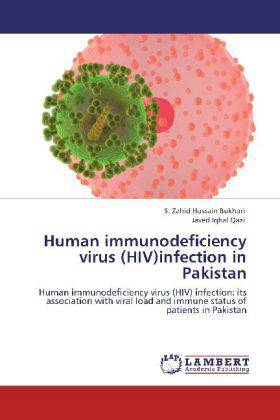
- Afhalen na 1 uur in een winkel met voorraad
- Gratis thuislevering in België vanaf € 30
- Ruim aanbod met 7 miljoen producten
- Afhalen na 1 uur in een winkel met voorraad
- Gratis thuislevering in België vanaf € 30
- Ruim aanbod met 7 miljoen producten
Zoeken
Human immunodeficiency virus (HIV)infection in Pakistan
Human immunodeficiency virus (HIV) infection: its association with viral load and immune status of patients in Pakistan
S Zahid Hussain Bukhari, Javed Iqbal Qazi
Paperback | Engels
€ 58,45
+ 116 punten
Omschrijving
Pakistan still has a window of opportunity to act decisively to prevent the spread of HIV/AIDS. According to UNAIDS estimates HIV prevalence is 0.1 percent among adult population in Pakistan. The officially reported cases are, however, much lower than the estimated cases. As in many countries, underreporting is due mainly to the social stigma attached to the infection, limited surveillance and voluntary counseling and testing systems, as well as the lack of knowledge among the general population and health practitioners. Until recently, Pakistan was classified as a low-prevalence country with many risk factors that could lead to the rapid development of an epidemic. The presence of significant risk factors such as the very low use of condoms among vulnerable populations including female sex workers (FSW), men who have sex with men (MSMs), truckers, and Hijras, low use of sterile syringes among injecting drug users (IDUs), inadequate blood transfusion screening and high level of professional donors, large numbers of migrants and refugees may lead to an epidemic situation of HIV/AIDS in Pakistan.
Specificaties
Betrokkenen
- Auteur(s):
- Uitgeverij:
Inhoud
- Aantal bladzijden:
- 148
- Taal:
- Engels
Eigenschappen
- Productcode (EAN):
- 9783847311119
- Verschijningsdatum:
- 12/12/2011
- Uitvoering:
- Paperback
- Formaat:
- Trade paperback (VS)
- Afmetingen:
- 152 mm x 229 mm
- Gewicht:
- 226 g

Alleen bij Standaard Boekhandel
+ 116 punten op je klantenkaart van Standaard Boekhandel
Beoordelingen
We publiceren alleen reviews die voldoen aan de voorwaarden voor reviews. Bekijk onze voorwaarden voor reviews.











